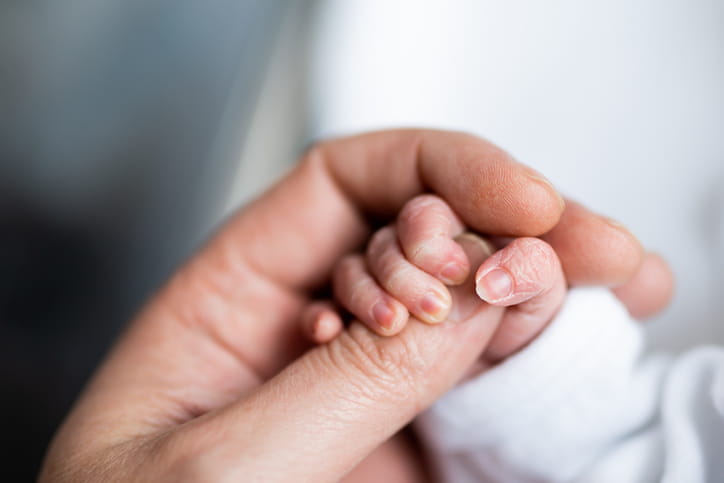Birth Injury: Shoulder Dystocia
Welcoming a new child should be a joyous occasion. Unfortunately, however, every year, approximately 30,000 newborns in the U.S. suffer a birth injury during their arrival. Depending on the type of birth injury, infants may make a full recovery with treatment, or they may deal with health problems for the rest of their lives.
Parents of newborns with birth injuries may be upset and unsure about their options. Bachus & Schanker understand how stressful and traumatizing coping with a newborn’s birth injury can be. We will share some information about common birth injuries, take a closer look at shoulder dystocia, explain your legal options, and discuss how we can help.
Bachus & Schanker Wins – Over $1 Billion Recovered
- What Are Common Birth Injuries?
- What Is Shoulder Dystocia?
- What Causes Shoulder Dystocia?
- What Are The Long-Term Effects Of Being Born With Shoulder Dystocia?
- Should I Contact A Lawyer For Shoulder Dystocia?
- How A Birth Injury Lawyer Can Help
- Related Catastrophic Birth Injury Resources
- You Deserve Fair Compensation
What Are Common Birth Injuries?
By definition, a birth injury is an injury impairing a newborn’s physical structure or functions because of something that occurred during childbirth. The following types of birth injuries are common:
- Brachial palsy: Brachial palsy refers to damage to the nerves in a newborn’s arms. The nerves can be bruised, swollen, or torn. The prognosis depends on the nature of the damage. Bruised nerves can heal within months, but damage from torn nerves may be permanent.
- Caput succedaneum: Vacuum extractions increase the risk of caput succedaneum, which occurs when a newborn’s scalp tissues swell
- Cephalohematoma: Arteries, nerves, cells, and veins make up the periosteum that covers bones in the human body. When a newborn has bleeding between their skull and its periosteum, they have cephalohematoma, which takes weeks to months to heal.
- Cerebral palsy: Cerebral palsy refers to several types of neurological disorders. Developmental delays and motor control issues affect individuals with cerebral palsy. There are several types of cerebral palsy, including ataxic cerebral palsy, hypotonic cerebral palsy, and spastic cerebral palsy. Brain damage can cause cerebral palsy.
- Facial paralysis: Pressure against the newborn’s facial nerve can cause facial paralysis. The risk of facial paralysis increases if the newborn gets stuck in the birth canal or forceps are used during delivery. Also, the newborn’s position in the uterus can cause pressure, leading to facial paralysis. Treatment for facial paralysis depends on whether the facial nerve is bruised or torn. Bruised nerves heal within weeks, but a newborn may need surgery to repair a torn facial nerve.
- Forceps injury: In addition to facial paralysis, forceps can leave bruising and affect the shape of the newborn’s head
- Fractures: Newborns can suffer from fractured bones during delivery. The risk of fractures increases with breech births.
- Subconjunctival hemorrhage: Broken blood vessels in the newborn’s eyes discolor their eyes. There are no long-term effects, and the condition clears up within two weeks of birth.
Other types of birth injuries include paralysis from spinal cord damage, breathing issues from damage to the phrenic nerve, and shoulder dystocia.
What Is Shoulder Dystocia?
Newborns that get stuck in the birth canal may suffer a birth injury called shoulder dystocia. The pubic bone or sacrum traps the shoulders, preventing them from passing through the birth canal to complete a vaginal birth. Without medical intervention to deliver the baby, the infant can suffer brain damage or die from lack of oxygen.
What Causes Shoulder Dystocia?
Although the cause of this birth injury stems from the newborn getting trapped in the birth canal, several factors increase the risk of shoulder dystocia. These risk factors include the following:
- Maternal diabetes: Maternal diabetes affects the fetus’s growth, which increases the newborn’s risk of shoulder dystocia.
- Newborn’s size: Large babies have a greater risk of shoulder dystocia. Although babies less than 8 pounds 13 ounces can suffer from shoulder dystocia, the rate of shoulder dystocia is between 5% and 9% for babies above this weight at birth.
- Oxytocin: Doctors may prescribe oxytocin during delivery to cause contractions. While this is seen as a way to resolve prolonged labor, it can cause shoulder dystocia.
- Prior shoulder dystocia: Anyone who’s had a newborn suffer from shoulder dystocia is at an increased risk of another child suffering from the condition.
- Prolonged labor: Allowing labor to proceed for extended periods without progress increases the risk of shoulder dystocia.
The risk factors for shoulder dystocia are evident before delivery, and medical professionals should consider these factors when determining whether to prescribe oxytocin or recommend a cesarean section.
What Are The Long-Term Effects Of Being Born With Shoulder Dystocia?
Shoulder dystocia can cause bone fractures or nerve damage. Bone fractures typically affect the newborn’s collarbone or humerus. When shoulder dystocia causes nerve damage, it’s also known as brachial plexus injury. The nerves controlling the newborn’s fingers, hands, and arms can be bruised, swollen, or torn.
Newborns deprived of oxygen while stuck in the birth canal may suffer from brain damage. The severity and symptoms depend on the length of time they were deprived of oxygen and treatment received after delivery. Prolonged oxygen deprivation can lead to death.
Shoulder dystocia can also affect the mother’s health. Some women suffer from bleeding and may need emergency medical care.
Should I Contact A Lawyer For Shoulder Dystocia?
It’s natural to be upset and traumatized when something goes wrong during your newborn’s delivery. You may wonder if your newborn’s shoulder dystocia was preventable, whether the medical team took appropriate steps during delivery, and whether medical professionals are giving you and your infant appropriate care.
You may have grounds for a lawsuit if the medical professionals made mistakes before or during delivery that contributed to or caused your infant’s birth injury. Talking to a birth injury lawyer is the best way to determine whether you have legal options to recover damages after a birth injury. Birth injury lawyers specialize in birth injury and medical malpractice law. They’re familiar with precedents established through court rulings, and they know how to build a case and help you get fair compensation after a birth injury.
Birth injuries can be costly. Short-term medical treatment can cost thousands in co-pays and medical costs. In contrast, children with long-term or permanent medical issues may need medical treatments and support throughout their lifetime.
How A Birth Injury Lawyer Can Help

Bachus & Schanker’s birth injury attorneys represent Colorado parents coping with birth injuries. We understand that unexpected medical emergencies can be traumatizing and life-altering. That’s why we have a Victim’s Advocate team who help our clients by investigating their cases. Our advocates also provide practical information about options for financial support until we get you the compensation you deserve.
Sources:
Balest, A.M. (2022). Birth Injuries in Newborns.
Birth Injury Statistics. (2023).
Periosteum. (2023).
Shoulder Dystocia. (2022).
Shoulder Dystocia. (2023).
Related Catastrophic Birth Injury Resources
You Deserve Fair Compensation
Don’t let the insurance companies intimidate you into accepting less than you deserve. We’re ready to fight for you.

Written and Legally Reviewed By: Kyle Bachus
![]() 4.6 ★★★★★ 1,461 Google Reviews
4.6 ★★★★★ 1,461 Google Reviews
Kyle is a member of the Colorado and Florida Bar associations and has served on the Board of Directors of the Colorado Trial Lawyers Association for more than twenty years in total. Over the years, Kyle has achieved justice for many clients. He has served on numerous committees and repeatedly won recognition from his peers at both the state and national level. He is proud of the role he has played in the passage of state and national legislation to protect consumers and is a frequent speaker and guest lecturer.















